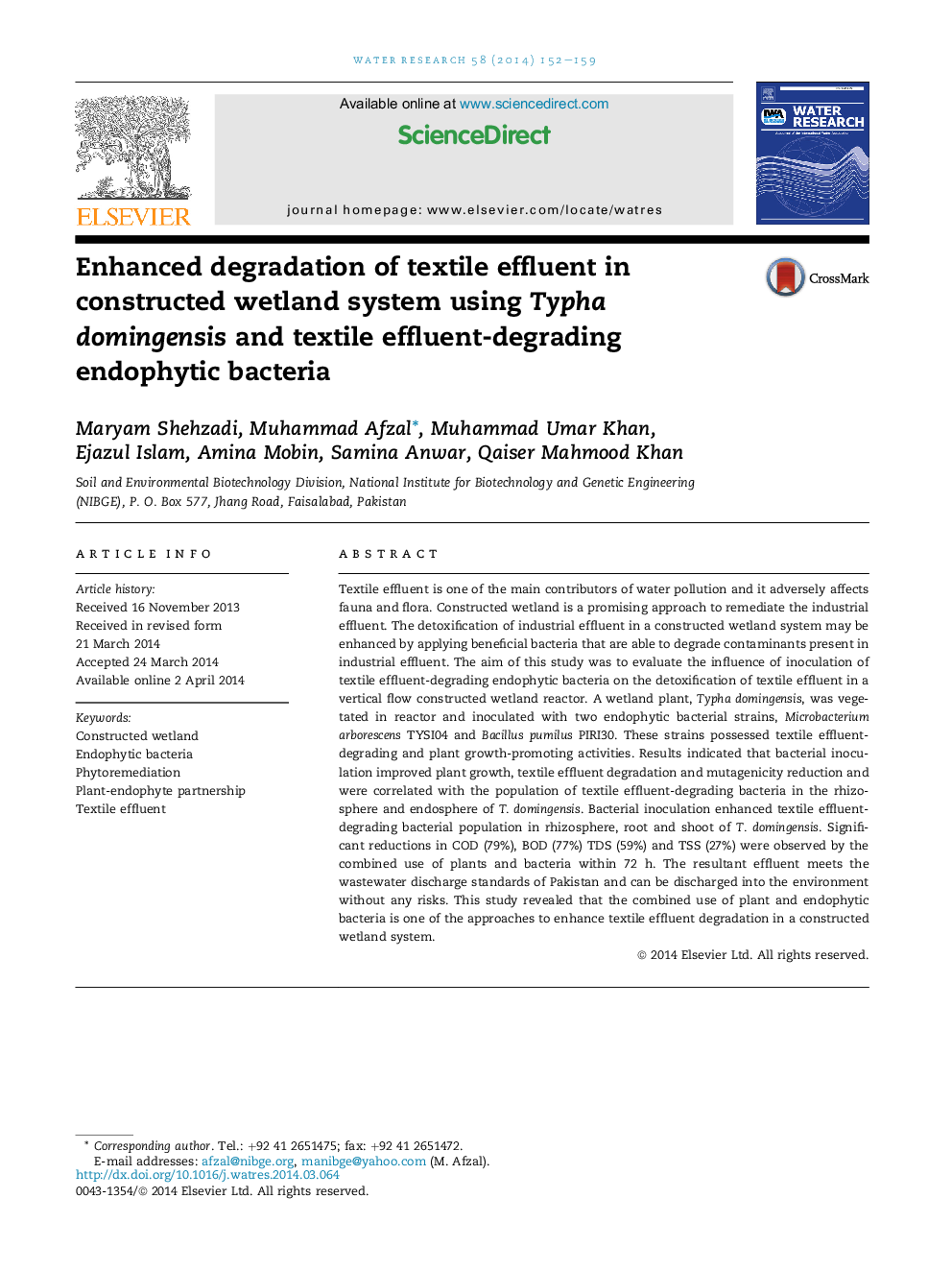| کد مقاله | کد نشریه | سال انتشار | مقاله انگلیسی | نسخه تمام متن |
|---|---|---|---|---|
| 4481571 | 1623110 | 2014 | 8 صفحه PDF | دانلود رایگان |

• Application of endophytic bacteria enhanced growth of Typha domingensis.
• Endophytic bacteria enhanced textile effluent degradation and toxicity reduction.
• More bacterial colonization in the root and shoot than the rhizospheric soil.
Textile effluent is one of the main contributors of water pollution and it adversely affects fauna and flora. Constructed wetland is a promising approach to remediate the industrial effluent. The detoxification of industrial effluent in a constructed wetland system may be enhanced by applying beneficial bacteria that are able to degrade contaminants present in industrial effluent. The aim of this study was to evaluate the influence of inoculation of textile effluent-degrading endophytic bacteria on the detoxification of textile effluent in a vertical flow constructed wetland reactor. A wetland plant, Typha domingensis, was vegetated in reactor and inoculated with two endophytic bacterial strains, Microbacterium arborescens TYSI04 and Bacillus pumilus PIRI30. These strains possessed textile effluent-degrading and plant growth-promoting activities. Results indicated that bacterial inoculation improved plant growth, textile effluent degradation and mutagenicity reduction and were correlated with the population of textile effluent-degrading bacteria in the rhizosphere and endosphere of T. domingensis. Bacterial inoculation enhanced textile effluent-degrading bacterial population in rhizosphere, root and shoot of T. domingensis. Significant reductions in COD (79%), BOD (77%) TDS (59%) and TSS (27%) were observed by the combined use of plants and bacteria within 72 h. The resultant effluent meets the wastewater discharge standards of Pakistan and can be discharged into the environment without any risks. This study revealed that the combined use of plant and endophytic bacteria is one of the approaches to enhance textile effluent degradation in a constructed wetland system.
Journal: Water Research - Volume 58, 1 July 2014, Pages 152–159